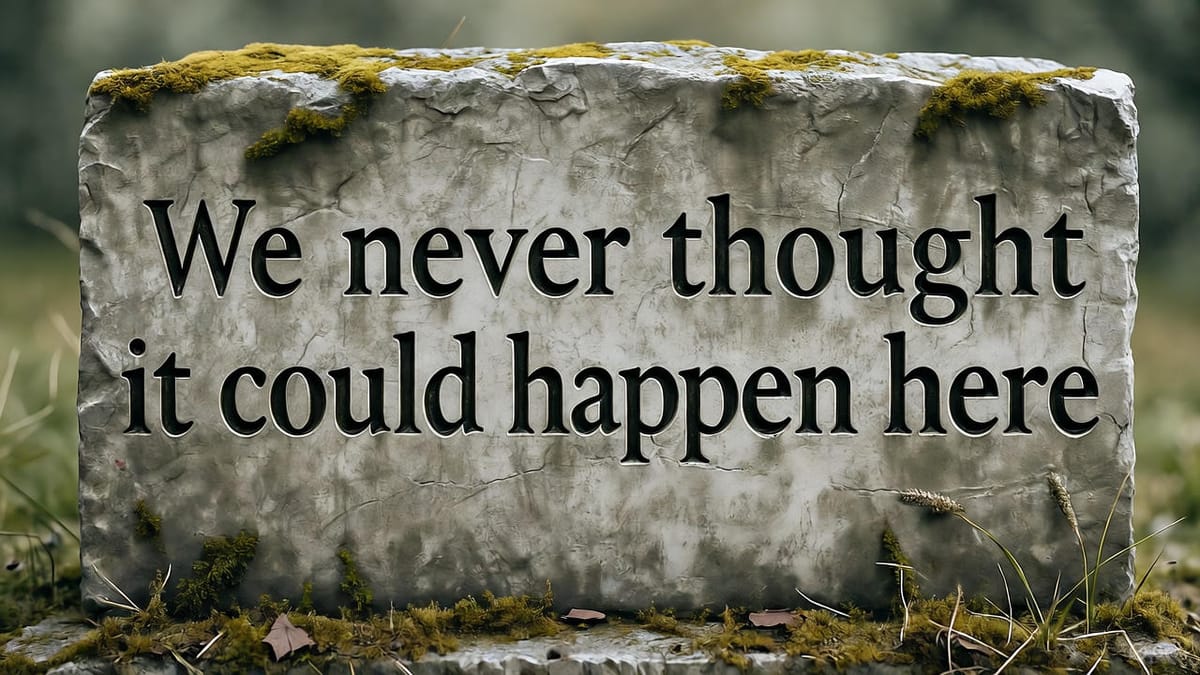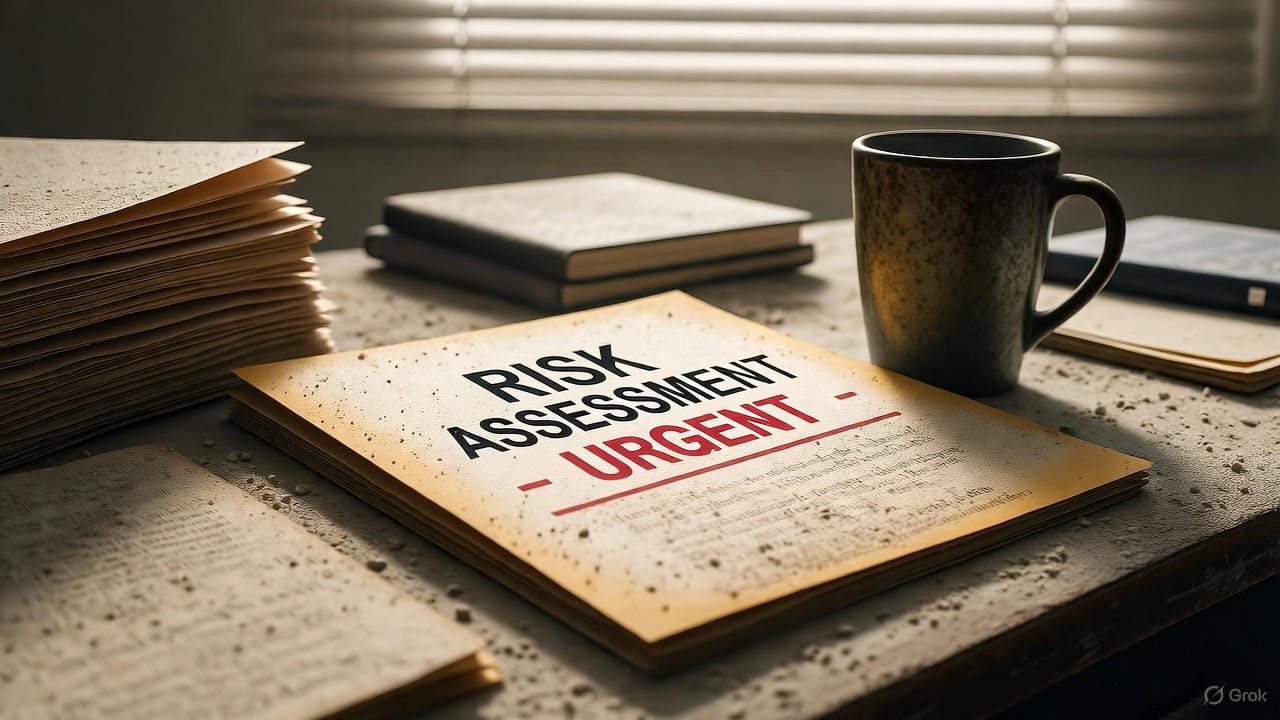We never thought it could happen here: Lessons in catastrophic risk management for DeFi and beyond
Learn how Fukushima, 2008 financial crisis, and Nassim Taleb's Black Swan theory reveal catastrophic risk patterns in DeFi. Discover why ergodicity, tail risk hedging, and Sagix prioritize survival over maximum yields in volatile crypto markets.

How ignoring tail risks leads to total obliteration—and why survival trumps optimization
Drawing from nuclear disasters, financial meltdowns, and the wisdom of Nassim Taleb, this article explores how designing for the unprecedented can safeguard against obliteration. For those building resilient portfolios, understanding these lessons isn't optional—it's existential.
The Fukushima disaster: When historical data fails spectacularly
The Fukushima Daiichi nuclear disaster stands as one of history's starkest lessons in dismissed warnings. The plant was designed to withstand tsunamis up to 5.7 meters—the maximum historical wave recorded in the area. This seemed prudent, based on centuries of data.
In 2007, Japan's Headquarters for Earthquake Research Promotion warned that much larger waves were possible, predicting tsunamis up to 15.7 meters from a potential magnitude 8.3 earthquake. Tokyo Electric Power Company (TEPCO) largely ignored this updated assessment. After all, such an event had "never happened before."

On March 11, 2011, following a magnitude 9.0 earthquake, a 14-15 meter tsunami inundated the facility. Backup generators flooded. Multiple reactors melted down. Over 150,000 people were evacuated. The broader tsunami claimed approximately 19,500 lives across 560 square kilometers. Economic costs reached hundreds of billions of dollars. Cleanup continues today.
Seismologist Ishibashi Katsuhiko had warned for years about these vulnerabilities, but his concerns were sidelined. The lesson is unambiguous: when new data challenges old assumptions, action is imperative, not optional.
The 2008 financial meltdown: Assuming the impossible won't occur
The 2008 global financial crisis demonstrated how sophisticated institutions can catastrophically misjudge risk. Their models assumed that a nationwide decline in U.S. housing prices was virtually impossible—it had "never happened before" on such a scale in modern history.
This flawed premise underpinned the securitization of subprime mortgages. Risky loans were bundled into complex financial products rated as safe. Financial engineers built elaborate models assuming housing prices would rise indefinitely, or at worst, remain stable.
When the bubble burst, reality arrived with devastating force:
- Home prices dropped approximately 30% nationally
- Financial institutions suffered trillions in losses
- Lehman Brothers collapsed, triggering systemic panic
- U.S. unemployment surged to 10%
- Households lost $16 trillion in wealth
Value-at-Risk (VaR) models widely used across the industry systematically underestimated tail risks. These models relied on historical data that didn't account for systemic shocks. They implicitly bet on continuing appreciation while ignoring correlated defaults—a catastrophic oversight that destroyed centuries-old institutions overnight.

Nassim Taleb's Black Swan: Understanding rare, high-impact events
Nassim Nicholas Taleb's "The Black Swan" crystallizes why we systematically underestimate catastrophic risks. A Black Swan event has three characteristics:
- It is an outlier residing outside the realm of regular expectations
- It carries extreme impact whether positive or negative
- It is retrospectively predictable after the fact, we construct explanations making it seem less random than it was
Taleb argues humans systematically overlook such outliers because our models assume "Mediocristan"—a world of mild randomness where events cluster around averages. But reality often operates in "Extremistan," where fat-tailed distributions dominate and extreme events occur far more frequently than normal distributions predict.
The triplet of opacity
Taleb identifies three factors that blind us to Black Swans:
History's hidden randomness: We focus on visible successes while silent evidence—the failures that disappeared—remains unseen. The cemetery of obliterated strategies teaches us nothing because we never see it.
The illusion of understanding: We believe we comprehend complex systems better than we actually do. Our models feel precise, creating false confidence in our predictions.
The distortion of silent evidence: Survivorship bias leads us to study only winners, ignoring the graveyard of failed attempts that used identical strategies.
His turkey analogy captures this perfectly: A turkey is fed daily for 1,000 days, developing the scientific conviction that feeding is a general rule of life. This belief is strongest on day 1,000—right before Thanksgiving arrives as an unforeseen Black Swan.
The 1987 stock crash, the 2008 financial crisis, and the COVID-19 pandemic all represented multi-sigma events that "should have been impossible" according to traditional models. Yet they occurred—because fat tails are fatter than we assume.
The 'MUST NOT' principle: Ergodicity and non-recoverable risks
At the heart of sound risk management lies ergodicity, which addresses a fundamental question: Do ensemble averages (outcomes across many participants) match time averages (outcomes for one participant over time)?
In ergodic systems, they match. Flip a coin enough times and you'll approach 50/50 whether you're one person flipping many times or many people flipping once.
In non-ergodic systems, they don't. Consider Russian roulette: Across a group, 5 out of 6 players survive (83% survival rate). But for any individual player over multiple rounds, survival approaches zero. The ensemble average doesn't match your personal time average.

The MUST NOT rule
This leads to the MUST NOT principle: If a risk has even a tiny probability of total obliteration with no recovery, avoid it entirely—regardless of expected value.
Examples include:
- Russian roulette for money (one loss ends the game permanently)
- Putting all savings into one speculative asset (total loss means no recovery path)
- Ignoring nuclear safety margins (catastrophic failure is irreversible)
- Overleveraged trading positions (liquidation can wipe out years of gains instantly)
Taleb warns that mistaking vertical (group) averages for horizontal (personal) ones leads to ruin. You only have one life, one portfolio, one chance. Dead portfolios don't recover.
This is why Sagix prioritizes survival across all market conditions. Only survivors compound returns over time.
Why we misjudge risks: The role of cognitive biases
Our brains evolved for a world very different from modern financial markets, leaving us vulnerable to systematic errors in risk assessment.
Survivorship bias: We focus on winners while failures disappear from view, creating a distorted picture of actual risk.
Recency bias: Recent experiences dominate our perception. After months of stability, we assume permanence. After a bull market, we forget bears exist. False security peaks precisely when risks are highest.

Overconfidence bias: Studies show subjective confidence exceeds objective accuracy by wide margins. We routinely overestimate our ability to predict, time exits, or identify risk.
Authority bias: We trust experts even when their track records don't warrant it. "Experts" who failed to predict previous crises are nevertheless believed about current risks.
Optimism bias: Humans systematically overestimate positive outcomes and underestimate negative ones, leading to under-hedging and under-preparation.
Hindsight bias: After events unfold, we convince ourselves we "knew it all along," preventing genuine learning because we believe we already understood the risks.
These biases don't just affect individuals—they create systemic vulnerability. When everyone shares the same blind spots, entire systems become fragile to identical shocks.
Counter-measures require systematic skepticism: Question whether historical data is complete. Design systems that survive beyond your experience. Assume your models are wrong in dangerous ways.
Applying lessons to DeFi and cryptocurrency
The cryptocurrency space epitomizes a high-risk, non-ergodic environment where catastrophic events occur with disturbing frequency. Understanding these lessons isn't theoretical—it's survival.
DeFi participants face numerous tail risks: flash crashes triggering cascading liquidations, smart contract exploits draining protocols overnight, regulatory shocks rendering sectors illegal, liquidity freezes during extreme volatility, and correlated contagion across interconnected platforms.
The pattern repeats: protocols that operated flawlessly for months collapse in days. "Audited" code suffers exploits. Respected projects implode. Each time, participants are shocked—but only because they assumed historical stability predicted future safety.
Strategies to avoid obliteration
Never bet the farm: Concentrated positions without hedging are Russian roulette. One exploit, one rug pull, one regulatory action equals game over. Position sizing must account for total loss scenarios.
Diversify beyond crypto: "Diversifying" across multiple DeFi protocols may provide illusion, not protection. True diversification requires assets that don't collapse simultaneously—exposure beyond the ecosystem entirely.
Employ tail risk hedges: Options, stop-losses, and protective structures cost money during calm periods but prevent obliteration during crashes. These "insurance premiums" matter more than maximum yield.
Assume models are wrong: If your strategy relies on assumptions like "the peg will hold" or "the protocol is secure," you're vulnerable. Design for failure of your own assumptions.
Remember crowded trades unwind violently: When strategies become ubiquitous, they're often near collapse. Being part of the herd means being trampled during panic.
Maintain optionality: Keep reserves for opportunities emerging during crashes. Fully deployed, leveraged portfolios cannot pivot when conditions change.
Conclusion: Design for the unprecedented
The epitaph "we never thought it could happen here" marks countless graves in financial history—from Fukushima to Lehman Brothers to crypto catastrophes. Each followed the same pattern: dismissal of warnings, over-reliance on historical data, cognitive biases obscuring risk, and ultimately, obliteration of those who failed to prepare.
The lessons are unambiguous:
- Heed updated risks even when they challenge comfortable assumptions
- Embrace Black Swan thinking by designing for events beyond historical experience
- Respect ergodicity by avoiding any single risk causing total loss
- Counter cognitive biases through systematic skepticism
- Prioritize survival over maximum yields
You only get to compound returns if you survive to compound. One total loss ends the game permanently.
In volatile markets where Black Swans swim in every pool and tail risks lurk behind every opportunity, the wisdom is ancient but urgent: Design for the unprecedented, or be destroyed by it.
Because when catastrophe strikes—and it will—"we never thought it could happen here" offers neither solace nor salvation.


Disclaimers
Educational purpose only: This content is for educational purposes and does not constitute financial, investment, or legal advice. Sagix Apothecary provides analysis drawing from historical precedents, but all decisions are your own. Always conduct your own research and consult professionals before making financial decisions.
Risk warning: Cryptocurrency and DeFi involve significant risks, including total loss of capital. Past performance does not indicate future results. All investments carry risk.
AI-assisted content: This analysis was prepared with AI assistance (Claude, Anthropic). While efforts were made to ensure accuracy, readers should independently verify information before relying on it.
No professional relationship: This content does not create any advisory or fiduciary relationship. Readers seeking professional guidance should consult qualified professionals licensed in their jurisdiction.
Liability: The authors, Sagix Apothecary and The Genesis Address Publishing LLC assume no responsibility for errors, omissions, or consequences arising from use of this information. Users assume full responsibility for any decisions based on this content.




